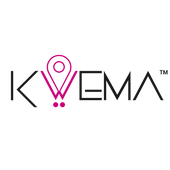Since the beginning of the pandemic through mid-October, OSHA has cited more than 100 companies for violations related to coronavirus resulting in more than $1.6 million. Violations include failures in training employees on the proper use of PPE, implementing a written respiratory program, providing a medical evaluation, reporting an injury, illnesses, or fatality as well as other deficiencies that put employees’ health at risk.
Due to the way COVID-19 spreads, a key measure to prevent its transmission is conducting social distancing. However, in some jobs, it can be particularly difficult to maintain a safe distance because workers are in close contact with people daily. Examples of this can be people such as, personal care and health services while in other jobs workers perform activities in a closed environment where people are in close contact for a long time such as warehouse and farmworkers.
For instance, last month there were reports of an outbreak in a medical center in Massachusetts where 15 staff members tested positive for COVID-19. It is believed that the cause of this outbreak was the fact that the staff had been eating together in a break room.
A different case was reported on a poultry farm located in Merced County, California. Where health authorities' investigations identified at least 392 positive cases of COVID-19 and 8 deaths due to the outbreak. They found the company had ignored most of the health recommendations for COVID-19, including social distancing.
In fact, medical experts from Crossover Health have created a ranking of the risk associated with contracting COVID-19 with common workplace activities. Within the list of activities that rank from medium to high risk we can find:
- Working on an assembly line or in a manufacturing plant, in an open office, or in a cubicle within an open office.
- Eating in a large cafeteria or in a shared office kitchen.
- Attending large-in-person meetings in a conference room and discussion in the hallway.
- Networking activities like outdoor/indoor happy hours and dinners.
- Commuting by public transportation and other services that offer rideshares.
- Using an elevator.
- Using a workplace gym.
In order to prevent COVID-19 spread at work by implementing social distancing, it is crucial that employers:
- Using virtual communications in order to minimize contact among workers, customers, and clients.
- Making all necessary changes in the worker's schedule when working from home is not feasible to avoid large gatherings at the workplace at the same time.
- Identifying what kind of activities and situations might cause transmissions among employees.
- Rearrange desks, common areas, and other workspaces to maintain physical distancing among employees.
- Train employees on the ways COVID-19 can be spread, encourage them to follow all safety measures established at the workplace, and stay at home if they feel sick.
As we previously mentioned, workplaces can become potential places with higher levels of COVID-19 transmissions, especially if employees work in a closed environment for prolonged periods where social distancing measures are difficult to maintain.
Kwame helps to prevent potential COVID-19 outbreaks at your workplace with Contact Tracing functionality. If someone is diagnosed positive for COVID-19, our technology allows you to trace where the employee was, identify who they may have come into contact with and classify all employees into 3 groups of risk and take action to prevent spread.
Watch how Kwema is disrupting workplace safety
